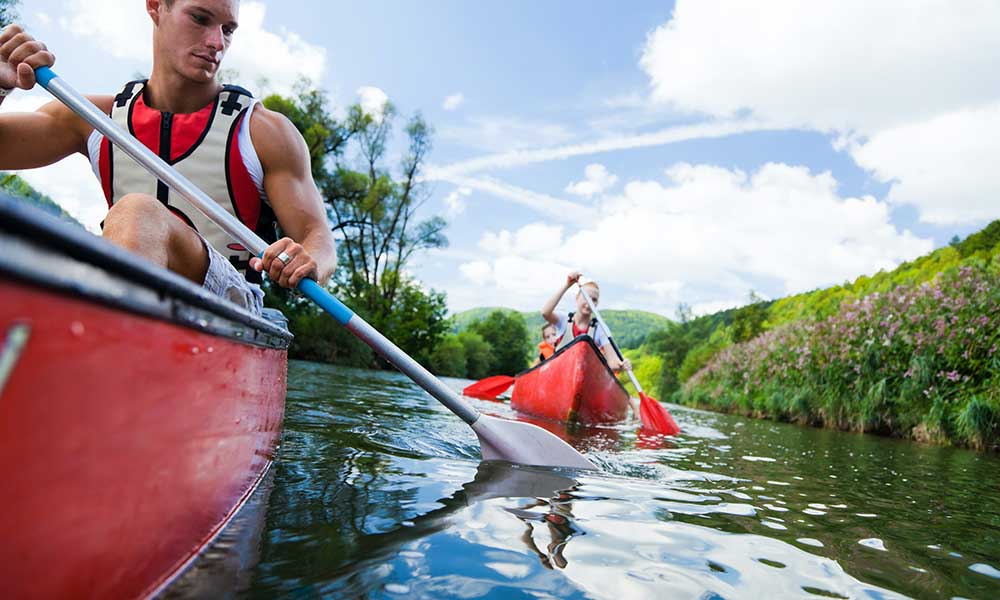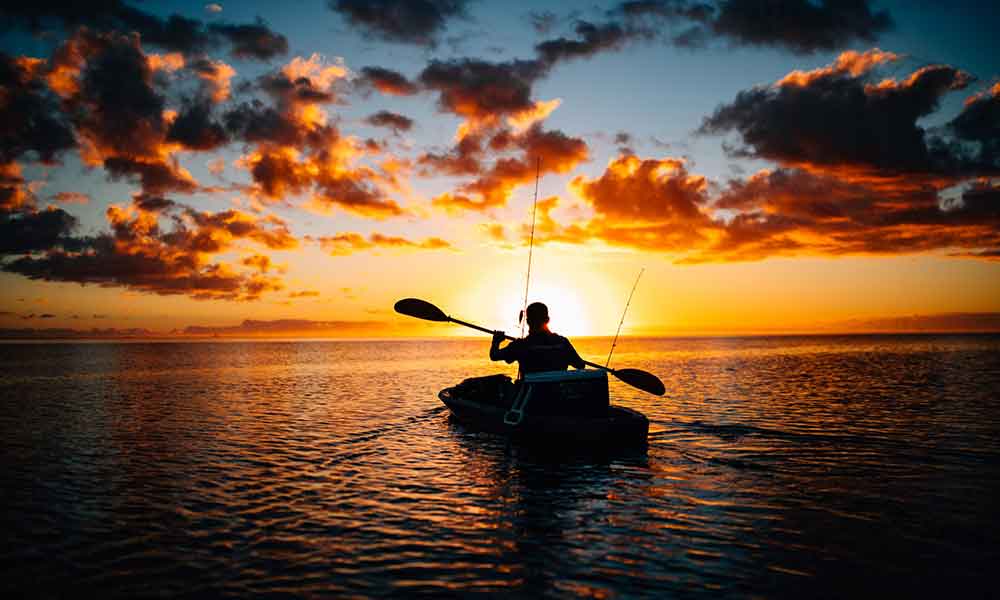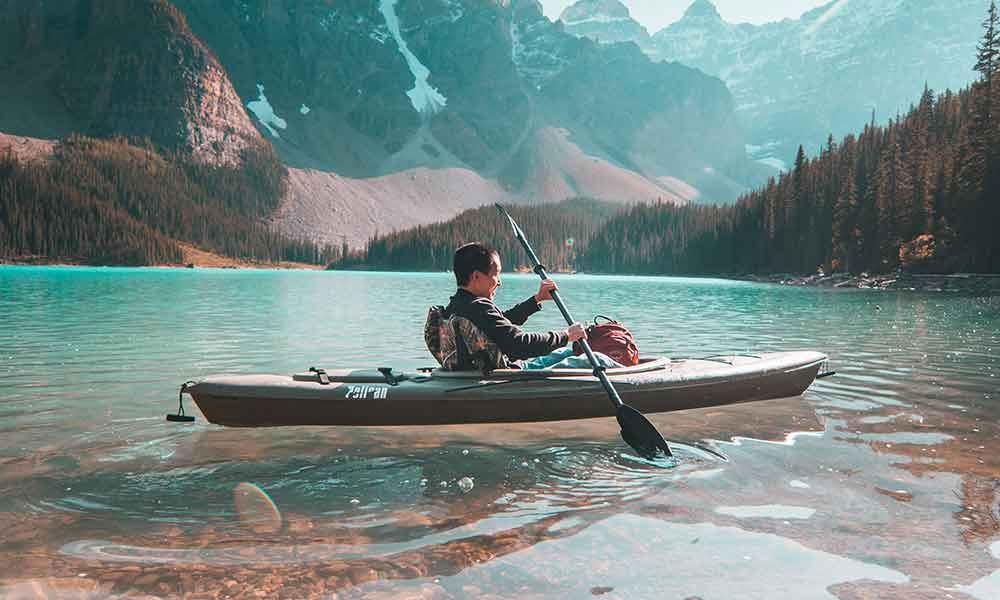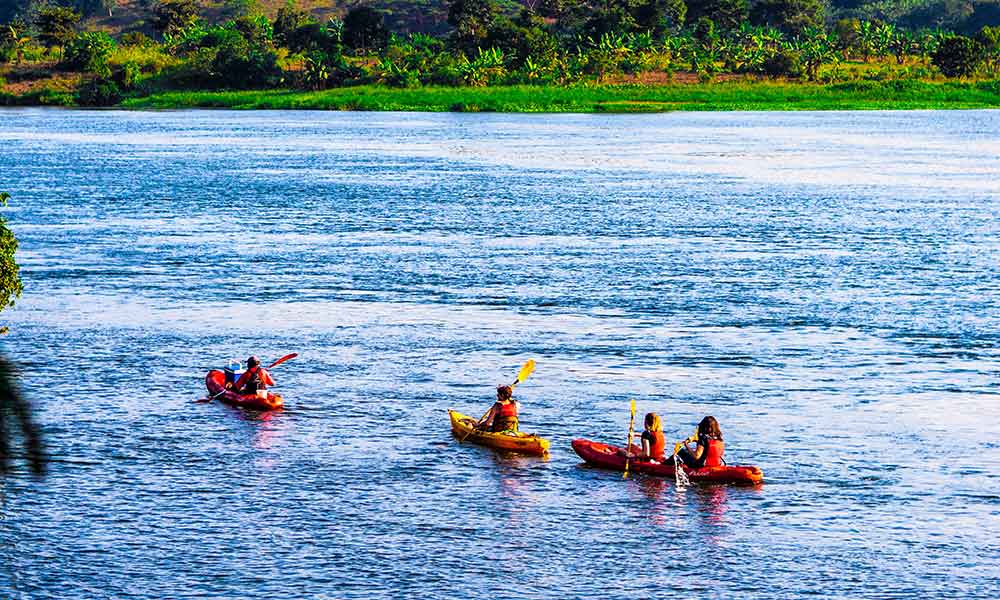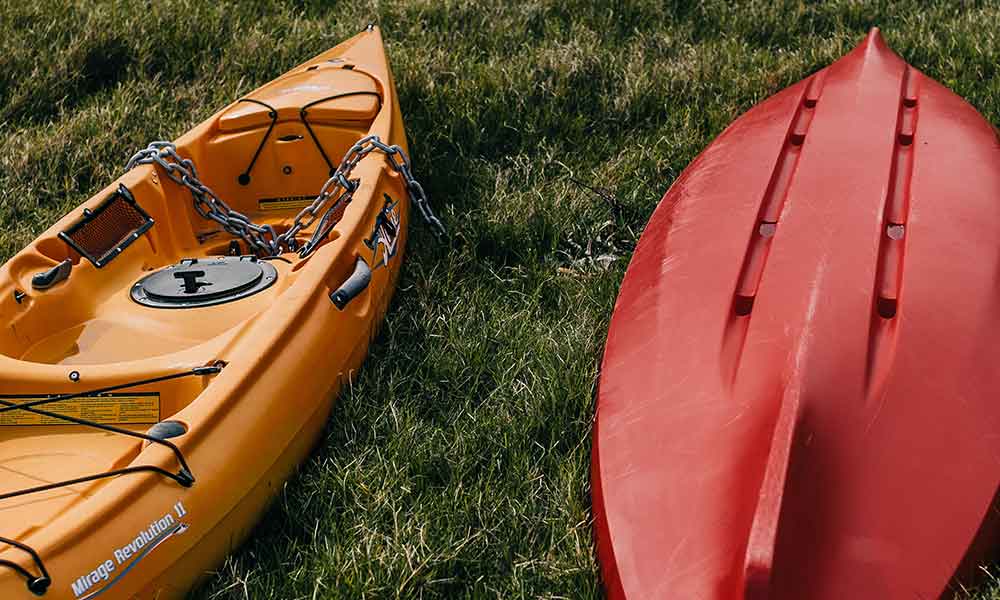Kayaks and canoes seem to be very similar. These are both small water vessels with a variety of different styles, construction, types, and several different uses. For the unfamiliar, a kayak and a canoe seem t be the same thing. What’s the difference between a kayak and a canoe?
Kayaks are smaller and have a small capacity. They are heavy to carry but tough and good for all water types. Canoes are large but light, easy to carry and have room to carry gear. Kayaks are faster, but canoes are better for long trips. Both are very capable watercraft.
Kayaks and canoes are very different boats, even if they seem to be somewhat similar. Whether you are a very experienced paddler or you are looking to buy your first vessel and trying to decide between the two, understanding the differences between kayaks and canoes is vital. Let’s take a look at these two water vessels to better highlight their differences.
The Kayak
To better understand the differences between kayaks and canoes, it is best to start by understanding the unique features, strengths, and weaknesses of each type of vessel. Let’s begin with the kayak and discuss some of the more key features of these boats, to better understand them and compare them to canoes.
The kayak is a unique water vessel. These small boats are typically constructed from various types of plastic and are very rugged and tough. Kayaks are designed to withstand very intense water conditions and are designed in many varieties.
Kayaks are typically solo watercraft, but tandem kayaks are available if two people want to use the same vessel. Solo kayaks are more popular, but it is also popular to kayak in groups, with each person using their own solo kayak.
This type of boat is very streamlined and slim, and the paddler is usually confined to one seat within the vessel. Kayaks have only one seating position, and the paddler is typically strapped into the kayak for better stability and control.
Kayaks are generally small, and do not have much room for storage, and do not allow the paddler to move about within the vessel. Kayaks are also quite heavy and very cumbersome to carry outside of the water.
All types of water and water conditions are suitable for kayaking, as these vessels are designed to function well in open and exposed water such as the ocean, smooth and flat water as found in wide rivers and lakes, as well as intense rapids and fast-flowing white water. There is nothing that kayaks cannot handle in the hands of an experienced paddler.
Kayaks are very maneuverable, very stable, easy to control, and are very fast on the water. Kayak paddles are typically two-blade paddles, which allows for better control and increased speed in the water.
Overall, the kayak is a very capable, very functional watercraft that is suitable for all water conditions but is quite heavy and difficult to move outside of the water and is relatively small compared to other paddling vessels.
Pros And Cons Of Kayaks
Kayaks are perfect vessels for some situations but are lacking in others. Let’s clearly highlight some of the important pros and cons of kayaks.
Some of the pros and cons of kayaks include:
| Kayak Pros | Kayak Cons |
| Low profile and center of gravity | Heavy and difficult to carry |
| Cover longer distances more quickly | Small, and very limited space for gear |
| Very stable and maneuverable | Uncomfortable with very little room for movement |
| Multiple dry storage compartments | Not very good for multi-day trips |
| Double-blade paddle for speed and control | Not ideal for fishing |
| More versatile. Ideal for all water conditions | Challenging to learn how to use well |
| Less affected by wind | Can be very expensive |
The Canoe
Canoes and kayaks may appear to be somewhat similar, but the truth is that these two watercraft are very different from one another. Let’s have a closer look at the canoe and what makes this vessel unique.
Canoes are typically quite large for this type of watercraft. They are usually crafted out of wood and are surprisingly lightweight for their size. The canoe is an ideal vessel for smooth, calm water, but it is not the best crat for tackling more challenging waters or for exposed water.
This vessel excels in lakes and rivers where the water is smooth and calm. Fast flowing water can be paddled in a canoe, but rapids are likely to be too much for this boat.
Canoes are well-built, lightweight, and sturdy, which makes them very easy to carry outside of the water. Despite their size, a canoe can be easily carried by one person.
The large size of the canoe and the way that the vessel is designed to allow for a very spacious craft. A canoe is capable of storing significantly more cargo than a kayak and has ample space for gear and as well as people.
Thie size of this oat also makes a canoe the perfect vessel for a day trip on the water with the family. Adults and children can easily fit into a canoe simultaneously, along with any necessary gear and provision.
Canoes are typically paddled with a single-blade oar. This type of paddle, combined with the canoe’s higher center of gravity, reduced stability, and height above the water, makes the canoe a more unstable vessel. Despite this, canoes are very versatile, ideal for fishing. Camping and multi-day trips on the water.
Pros And Cons Of Canoes
To better understand the canoe and to identify some of its important strengths and weaknesses, let’s compare the pros and cons of a canoe:
| Canoe Pros | Canoe Cons |
| Very versatile and large with plenty of room for gear | Can be unstable at times |
| Very comfortable and spacious | Not suitable for rougher waters |
| Ideal for multi-day trips, camping, and fishing | High center of gravity and heavily affected by wind |
| Ideal for family outings | Quite slow, not ideal for covering distances quickly |
| Very light and easy to carry | Single-blade paddles used for canoes are less versatile |
| Ideal for calm waters | Difficult to control |
| Easy to learn to use | Not very maneuverable |
What’s The Difference Between a Kayak And A Canoe?
The main differences between kayaks and canoes are that kayaks are smaller, more streamlined, fasted, and better suited for rough water as well as open water than canoes.
Kayaks are heavier than canoes and more difficult to carry, but they are very easy to control and very maneuverable. Kayaks have less space for storage and are very uncomfortable, but they are ideal for covering long distances quickly.
Canoes are larger and lighter vessels. They are ideal for multi-day trips, camping, and fishing. These vessels are perfect for families, and they have plenty of room for gear and provisions.
This type of watercraft is not ideal for exposed water or for rougher water but is perfect for smooth water. Canoes are easy to carry, they are easier to learn to use well, and they are better for use with multiple people.
Overall, kayaks and canoes each have their own ideal use situations, and every paddler knows that deciding on which is best is impossible.
Conclusion
Comparing kayaks and canoes is a challenge. These are both very different water vessels, and they have their own strengths and weaknesses.
Use a kayak if you want to move quickly or if you are traversing challenging waters, but rather use a canoe if you are spending more time on the water, going fishing or camping, or if you have your family with you.
Decide which vessel is best for your needs, find one that suits your budget, and you will not be disappointed, regardless of whether you choose a kayak or a canoe!

